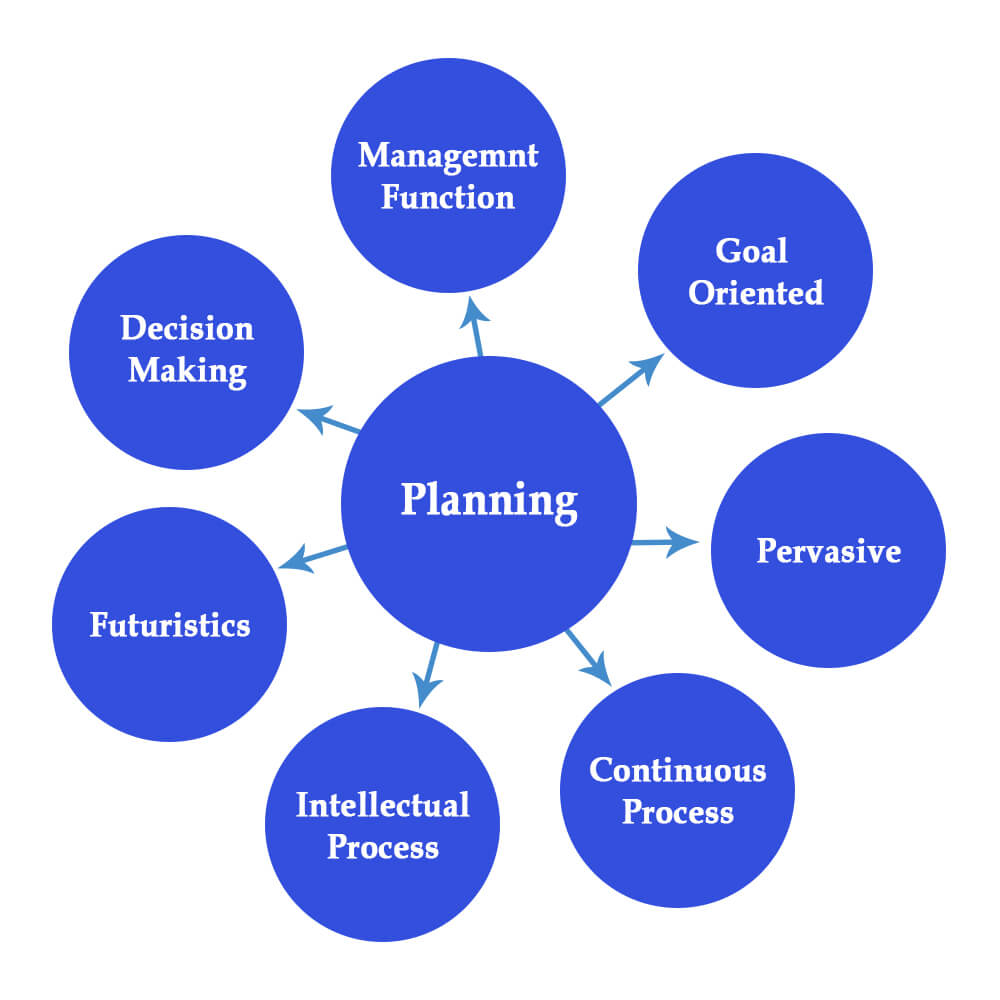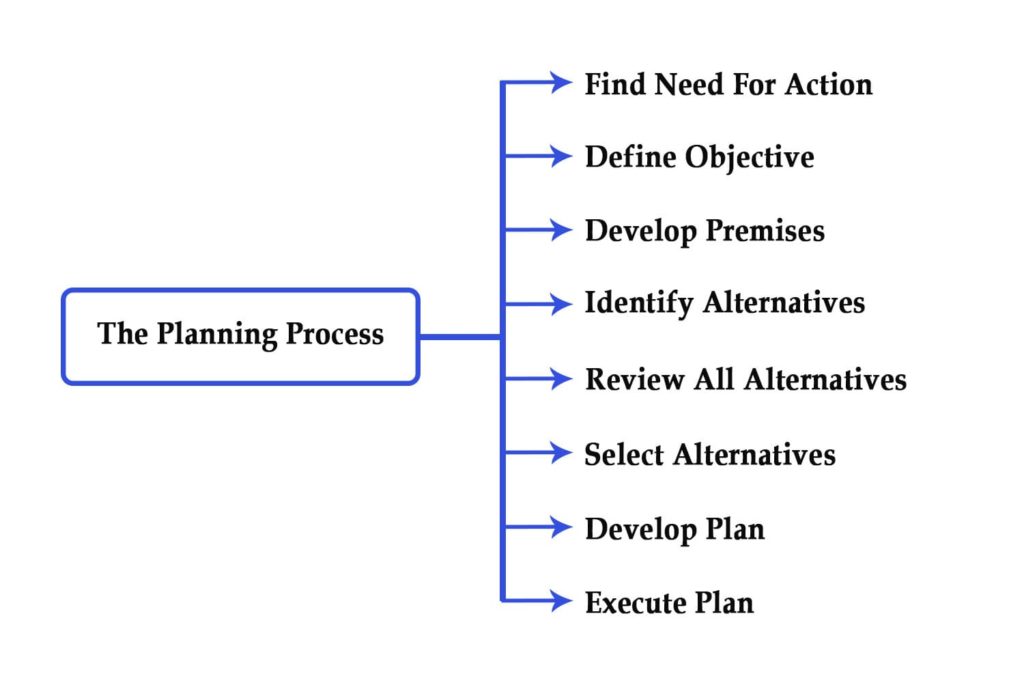Definition: Planning is thinking about how to achieve a goal. It can be formal or informal. The latter can involve only discussion and decision while the former is organized and in written format.
Planning is a management function that decides when, how, and who achieves objectives.
Planning is a time-consuming process, and it is the initial phase of any business venture or operation. The level of detail depends on the objective. A plan shows how an organization will achieve its goal by laying down the exact path.
The Planning Characteristics

Planning has seven characteristics:
- Management Function
- Goal-Oriented
- Pervasive
- Continuous Process
- Intellectual Process
- Futuristics
- Decision Making
#1. Management Function
Planning is a management function as it provides the basis for an organization to function. It helps them assign tasks, distribute staff, provide guidance to the department, and much more.
#2. Goal-Oriented
Planning is goal-oriented, focusing primarily on achieving organizational objectives.
#3. Pervasive
This means plans are available everywhere. Every department has a plan developed at the organizational level to achieve the goal collectively.
#4. Continuous Process
Planning is a continuous, never-ending process. Once specific objectives are achieved, new plans are developed. On the other hand, project management plans are an iterative process that continues to be updated as more details are available.
Planning is an ongoing organizational process.
#5. Intellectual Process
Developing a plan requires a lot of effort and skill. It is an intellectual process that needs education, experience, and subject matter expertise.
#6. Futuristic
This is about focusing on the future. You plan on what you will get done, which includes forecasting as well, so you can be ready for any eventuality.
#7. Decision Making
Planning involves deciding on every step to achieve organizational goals. There are always many choices to make, and the best solutions need to be selected.
The Planning Processes

Planning is essential for an organization to set goals and manage resources. It involves eight steps:
- Find Need for Action
- Define Objective
- Develop Premises
- Identify Alternatives
- Review All Alternatives
- Select Alternative
- Develop Plan
- Execute Plan
#1. Find Need for Action
Organizations need to find business opportunities before they can plan to realize them. They can conduct a SWOT analysis for such opportunities.
#2. Define Objective
This is a key planning step. An organization can have long-term or short-term objectives, so the planning can be for a one-time task or for continuous operation.
Define the objective and then let the plan guide the organization to achieve its objective.
#3. Develop Premises
Planning is for a future course of action, so you will have to make some assumptions. These are known as premises.
Premises can be internal or external.
Internal premises deal with policy procedures, organization culture, and resources. External premises are market conditions, political environment, and technological advancement.
#4. Identify Alternatives
There are many ways to complete an activity, and the organization has to identify all those alternatives.
#5. Review All Alternatives
After identifying alternatives, the organization evaluates all options to find the one with the best, most efficient results.
#6. Select Alternative
This is the stage where management will decide the best course of action. The selected alternative will be implemented in the plan.
#7. Develop Plan
After selecting a course of action, plans will be developed to complete the tasks and achieve organization goals.
#8. Execute Plan
This is the implementation phase. Here the planned activities are carried out to complete the task. The organization will provide all resources required to complete the goal.
The Significance of Planning
- It provides direction to the organization and employees.
- It helps an organization set its target.
- It helps the organization achieve its goal with less hassle.
- Planning reduces risks and uncertainty.
- It finds bottlenecks in processes
- Provides discipline to the organization and staff.
- It provided a hierarchical structure.
- It clarifies the roles and responsibilities of employees.
- Helps reduce conflicts.
- It reduces wastes and overlapping work
- Provides a control mechanism.
- It helps to forecast.
- Facilitates coordination among different departments.
The Limitations of Planning
- Planning can cause rigidity as it is difficult to make changes once the plans are approved.
- In a dynamic environment, such as an agile environment, planning may not work well.
- Planning sometimes can ignore creativity and be overly safe.
- Planning takes time and costs.
- Too many assumptions can lead to inaccurate planning
Summary
Planning is a basic need for the survival and growth of an organization. It helps organizations set targets and achieve their goals. Planning provides the departments and staff to carry out their collective activities and achieve organizational objectives.
